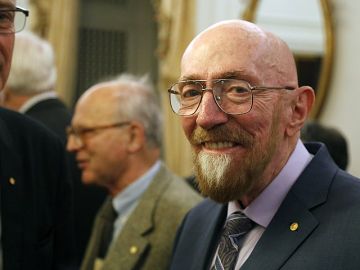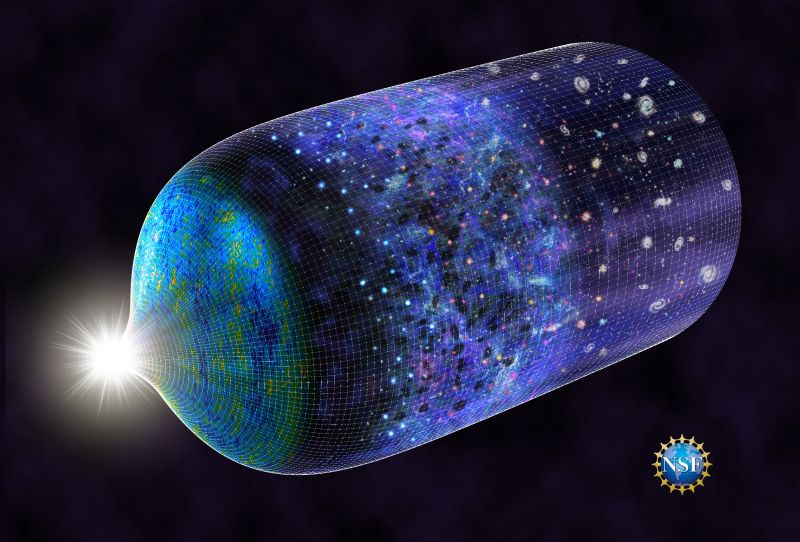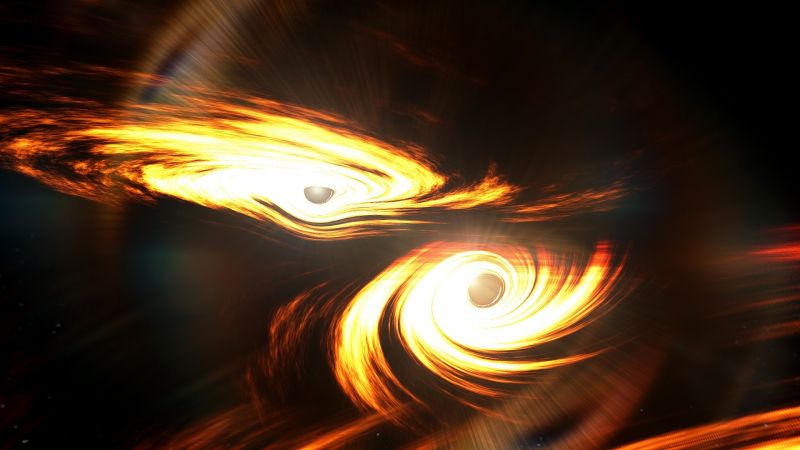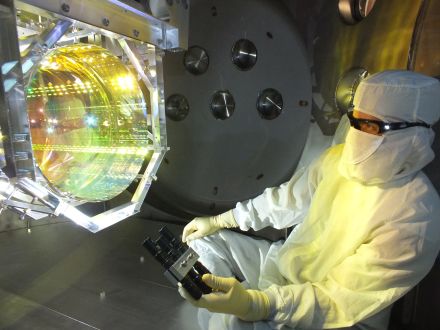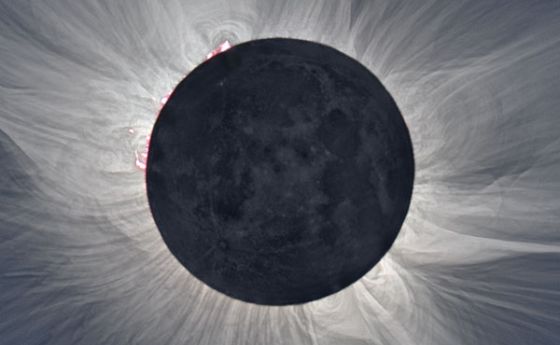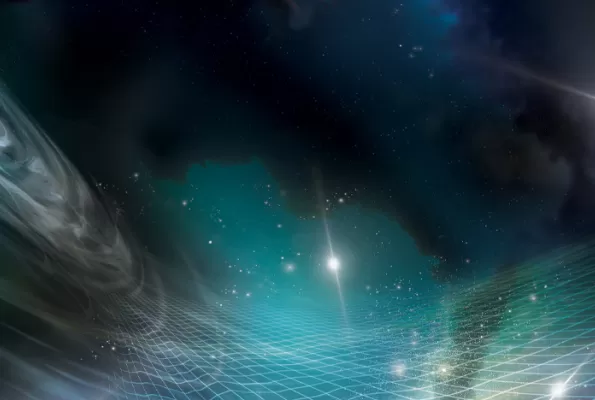
Gravitational waves will 'bring the information from the birth of the universe to us'
A Q&A with astrophysicist and Nobel laureate Kip Thorne about the announced findings revealing the gravitational wave background of the universe and what it means for our understanding of the cosmos.
In June, a team of researchers supported by the U.S. National Science Foundation announced that they found the first evidence of the gravitational wave background that pervades the universe.
The findings from the North American Nanohertz Observatory for Gravitational Waves (NANOGrav) a collaborative team from more than 50 institutions in the U.S. and abroad, compared observations of more than 60-millisecond pulsars gathered over a span of 15 years. These burned-out stars rotate hundreds of times per second and emit radio pulses. The team discovered variations in the "ticking rates" of those pulsars — variations that are correlated among the pulsars in a unique pattern that is produced by low-frequency gravitational waves distorting the fabric of physical reality known as spacetime. Those correlations are convincing evidence that NANOGrav is seeing gravitational waves.
While long predicted to exist, the discovery was the culmination of nearly 50 years of effort, said Kip Thorne, a theoretical physicist who shared the 2017 Nobel Prize in Physics for the development of the NSF-funded Laser Interferometer Gravitational-wave Observatory (LIGO).
NANOGrav trace its roots to work that began in 1977, when a pair of researchers, Mikhail Sazhin and Steven Detweiler, conceived of the idea of using the timing of pulsars to look for gravitational waves. In 2015, LIGO, using a different method, first detected gravitational waves that have periods of oscillation of about a hundredth of a second. In contrast, the waves detected by NANOGrav have periods of oscillation that can range from years to decades.
"I have been so eager to see this be achieved, because of the science that will come out of this in the long run — over the coming years and decades, the science is really going to be wonderful," Thorne said.
Thorne says NSF is essential to his career. "There is no way I could have done the science that I did without the National Science Foundation." Along with receiving numerous scientific accolades during his career, Thorn has served as the scientific advisor for the movie "Interstellar” and saw his friendship with Stephen Hawking portrayed on the big screen in the movie "The Theory of Everything."
Thorne spoke with NSF about the implications of the NANOGrav discovery and "a whole new way to explore the universe."
Why is it important that we study gravitational waves?
Thorne: The laws of physics say that there are only two kinds of waves that can be created in the distant universe and travel to Earth bringing us information about what's out there — electromagnetic waves (light, radio waves, x-rays and others), which is what we've always used up until now, and gravitational waves. The gravitational waves as we understand them are going to bring us very different kinds of information about the universe that you could never see with electromagnetic waves.
For example, gravitational waves created at the very birth of the universe travel unscathed through all the hot matter of the early universe, as the universe expanded. They didn't scatter. They didn't get absorbed. They bring the information from the birth of the universe to us today. It is possible, though not highly likely, that some of the waves seen by NANOGrav are from that primordial era.
And new kinds of instruments that will come online in the coming decades will almost surely see those primordial waves.
How important to the field of astrophysics is confirming the existence of gravitational waves?
Thorne: The greatest importance is the payoff in terms of observational astronomy over the coming decades and centuries. If you think back to the time of Galileo, that's 400 years ago roughly, he pointed his optical telescope at Jupiter and discovered Jupiter's four large moons and created or began instrument-based electromagnetic astronomy. And look at where we are now: What a radical revolution in our understanding of the universe has come from those instruments with electromagnetic waves since the time of Galileo.
Gravitational waves in collaboration with electromagnetic waves, through what we call multi-messenger astronomy, are the foundation for the future of astronomy. Several centuries from now, when our descendants look back on this era, I think they are going to say that one of the great contributions that we gave to them is our understanding of the universe through gravitational waves and electromagnetic waves working together.
Have the results from LIGO outperformed your expectations?
Thorne: My expectations for LIGO were very high. I wouldn't say the results outperformed them. They have, in fact, been about what I expected. It is quite remarkable that already in the early 1980s, it seemed clear to me that the first thing we would see would very likely be colliding black holes, and that is what actually happened in 2015.
It seemed also clear to me that we really needed to have the capability to simulate colliding black holes in order to understand the signals well enough to analyze LIGO's data. I think perhaps my biggest contribution was making sure that my colleagues who do numerical relativity perfected those simulations. And here we are.
With advanced LIGO's fourth data run, we're now seeing a pair of smallish black holes, about the size of a small city, collide approximately once every other day, and it's just fantastic. It's wonderful, the science that's coming off in terms of beginning to understand where these black hole binaries came from and using their collisions to test general relativity with ultra-high precision.
And it is likely that most of the waves seen by NANOGrav are from collisions of gigantic black holes, though we are not yet sure.
What do you think will be confirmed in the next decade or two?
Thorne: One of the most important things to me is testing general relativity in the regime where space-time is highly disturbed, oscillating rapidly with large amplitudes. That's the regime of the black hole collisions which in essence create a storm in the fabric or the shape of space and the rate and flow of time. The gravitational waves we see are just what you would expect from that space-time storm. That is the most exciting thing to me.
My one disappointment is that most of the waves from the most violent part of the storm go down the final black hole and don't come out to us. What I’m hoping for is that as LIGO improves, and as new kinds of instruments such as NANOGrav come online, we get much higher precision and will see final black holes with larger spins, and this will bring us more of the gravitational waves coming from the violent part of the space-time storm than what we’ve been seeing.
Hear more from Thorne, including the impact of NSF support on his career, his advice to future scientists and the possibility of time travel.
And to learn more about gravitational waves, watch NSF's Discovery Files.



